The river flows quietly but steadily past the riverbank. The water laps softly against the jetty. Water flows past the rocky outcrops, relentlessly. Turning from their ancient engravings, you watch it head towards the ocean. Beneath the surface, the water flows over other outcrops of rock. Hidden below, more engravings remain unseen and unseeable. What you see is only part of the treasure this site & the valley contains.
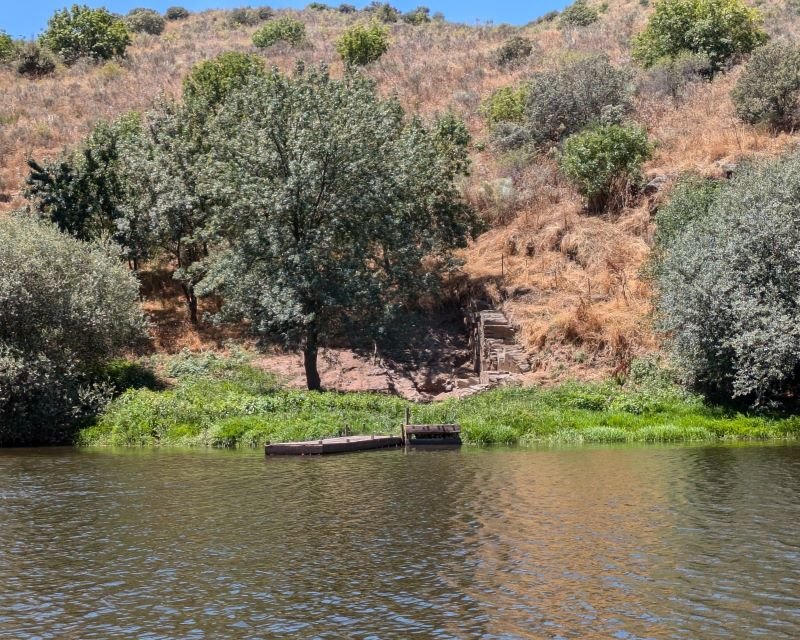
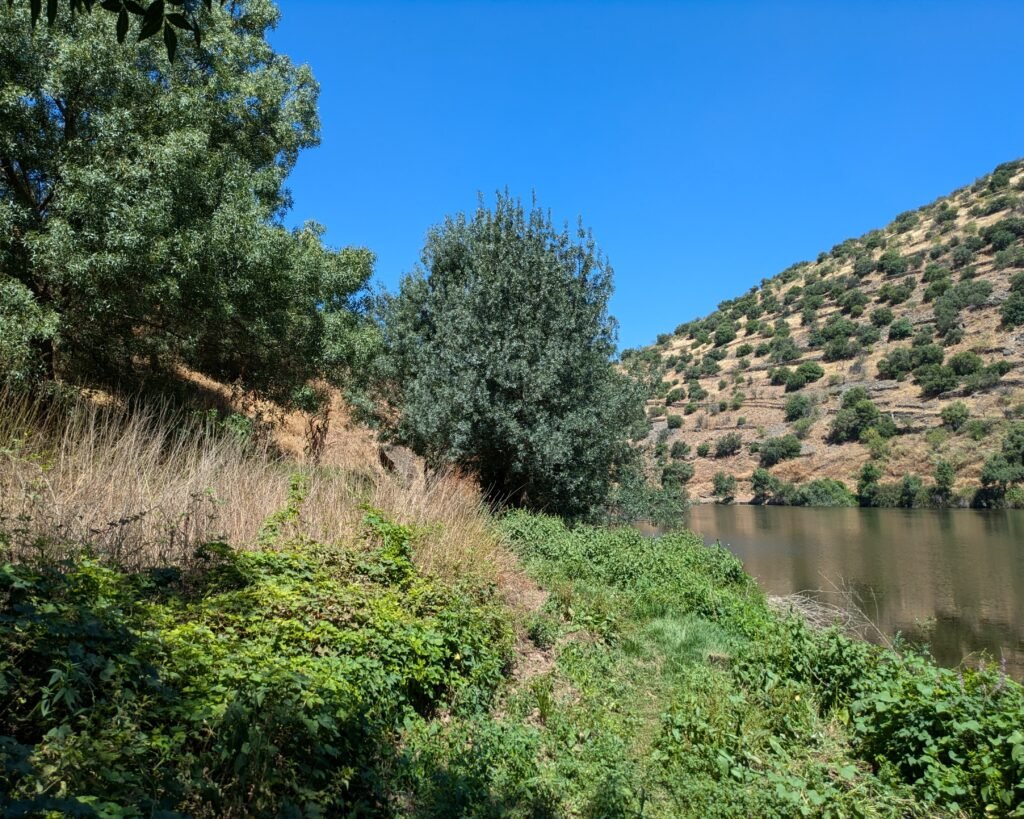
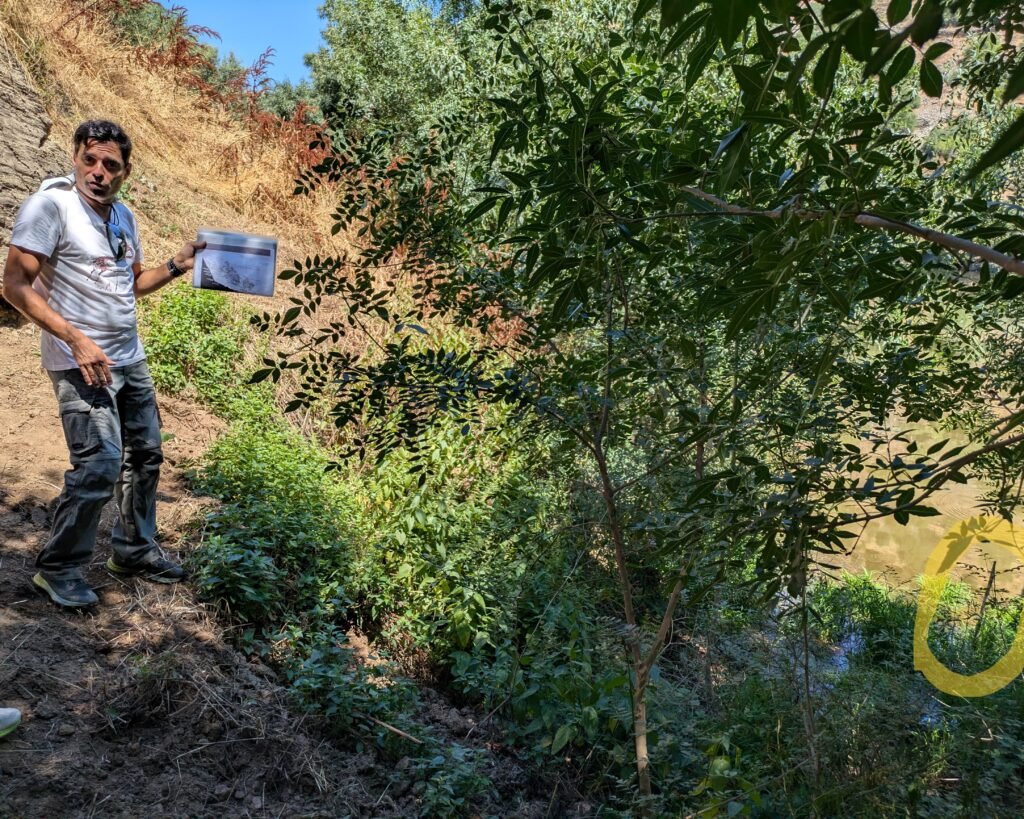

Reaching the Fariseu site by water is particularly rewarding: it’s cool and quiet and you are intensely aware of the river and its presence and effect on the environment. Standing in the shade of a tree, the guide gives an introduction to the site, setting the stage. Our guide, João Pedro, excellently describes the valley during Paleolithic times: it was colder and harsher, with more of a tundra environment. The local microclimate, however, allowed for an early spring during the period of glaciation, and people survived along the river, hunting above and making more permanent camps lower down the valley.
He leads us to the first rock, but first pauses to show a stick by the water’s edge: it marks the spot where, in 1999 while the river level was much lower, archaeologists excavated the engraved rock face known as Fariseu 1. It’s that stone that proved to the world the authenticity of the Paleolithic carvings of the Côa valley: a piece of the rock had fallen and was submerged in a layer of sediment dating back twenty thousand years. Fariseu 1 remains submerged, permanently preserved by the water. Its carvings can be seen in the Côa Museum, where a replica is on display.
He also shows us an excavated campsite and talks about the diet of the time period: small animals and fish, not the large mammals shown in the rock engravings. He puts forward the theory/opinion that these carvings represented tribal insignia: marking territory, communicating with tribal members as well as outsiders.
Fariseu was also the site where the first portable art from the Paleolithic was discovered in Portugal. More than 20 engraved stones were found here. Some of them can be seen in the Côa Museum.
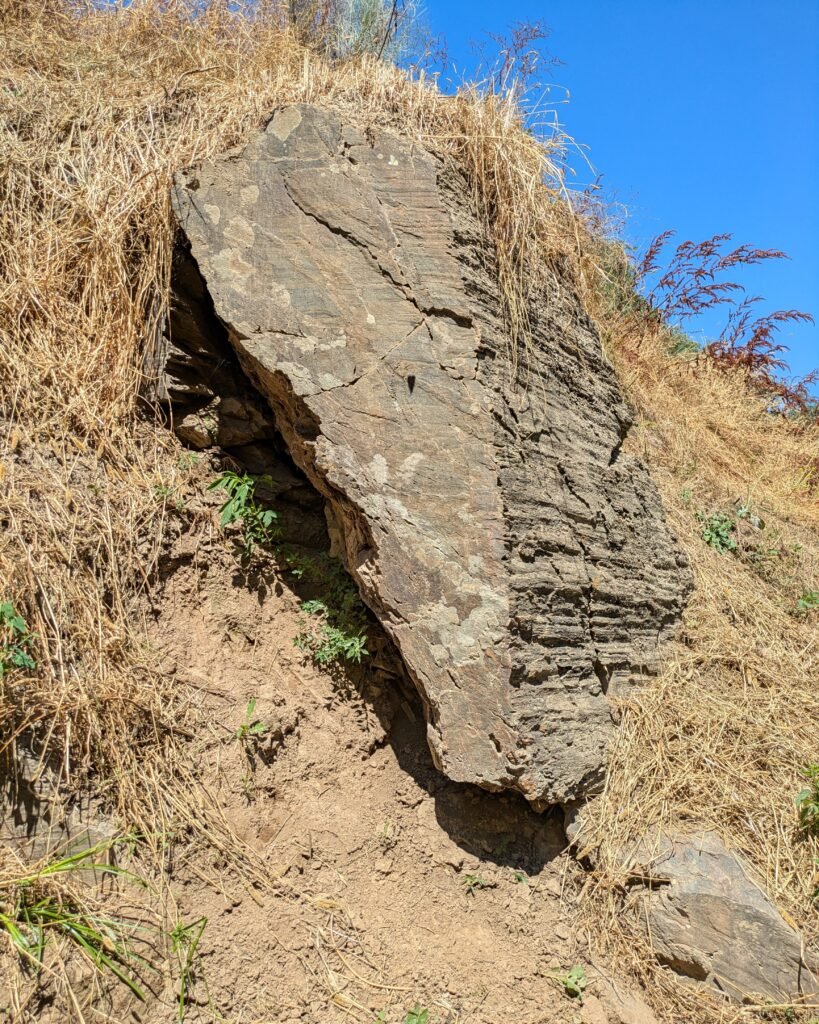

João Pedro turns to rock 2 that exists above water and shows how, despite its short horns, it represents a deer (with only the beginnings of the antlers represented), neck stretched upwards, mouth open, tongue extended: bellowing during rutting season. You can almost hear it.
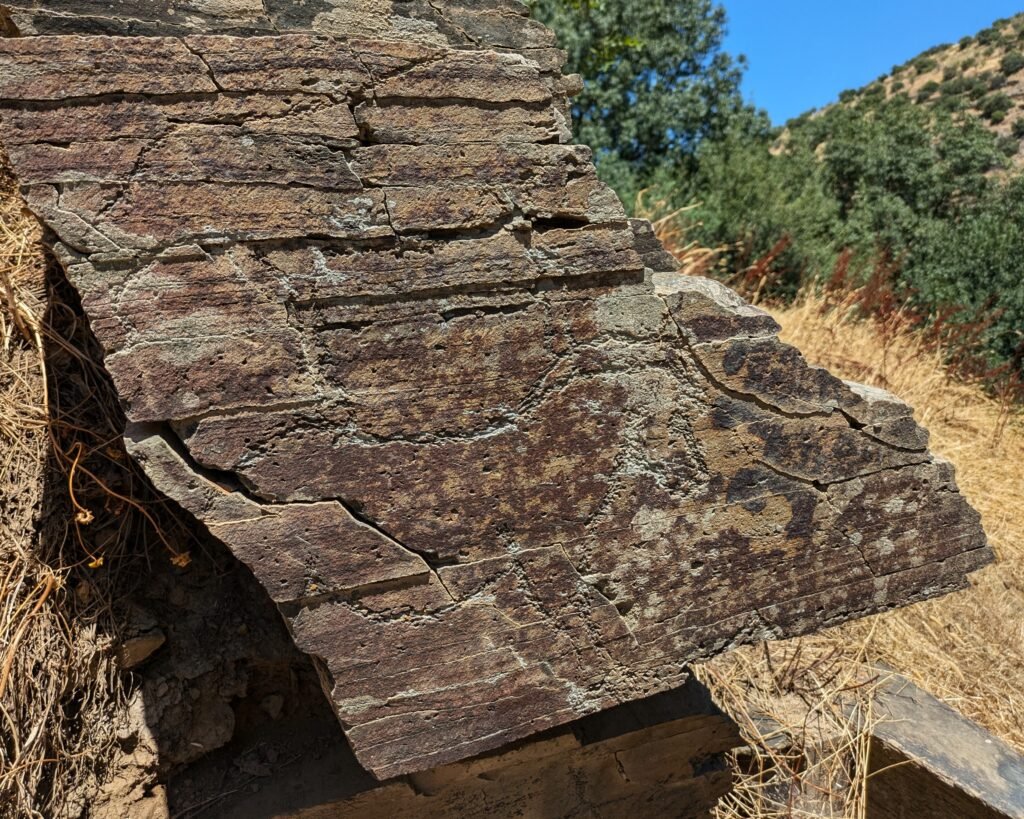
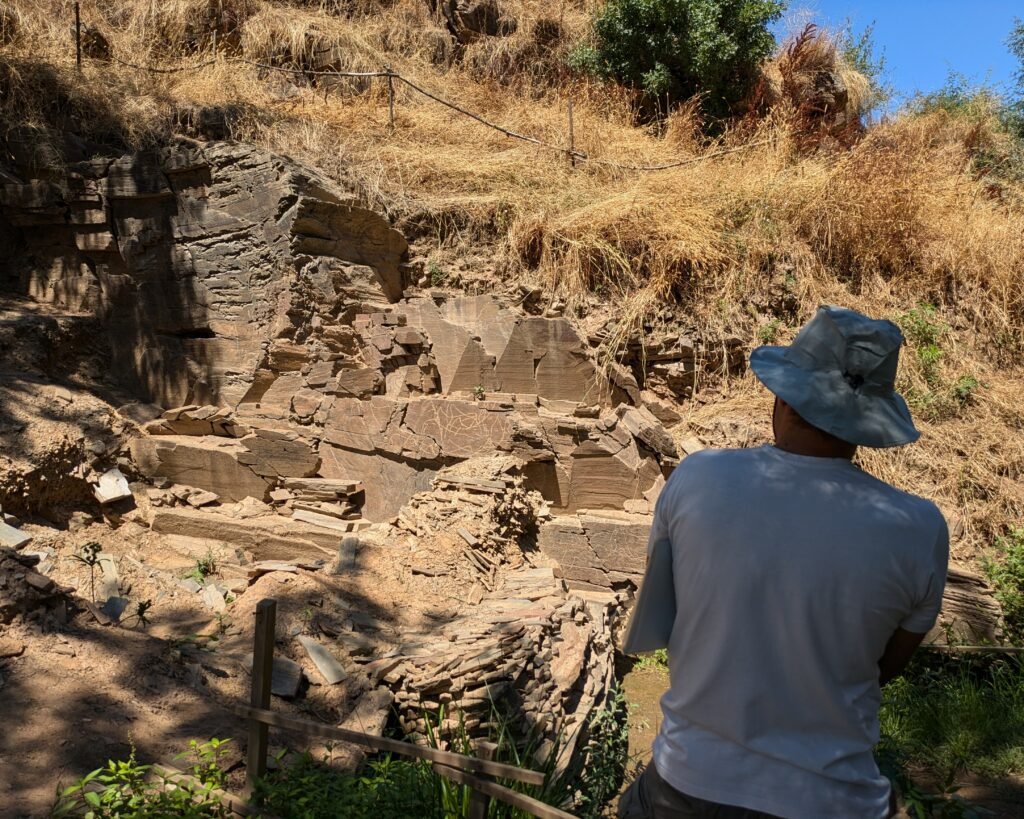
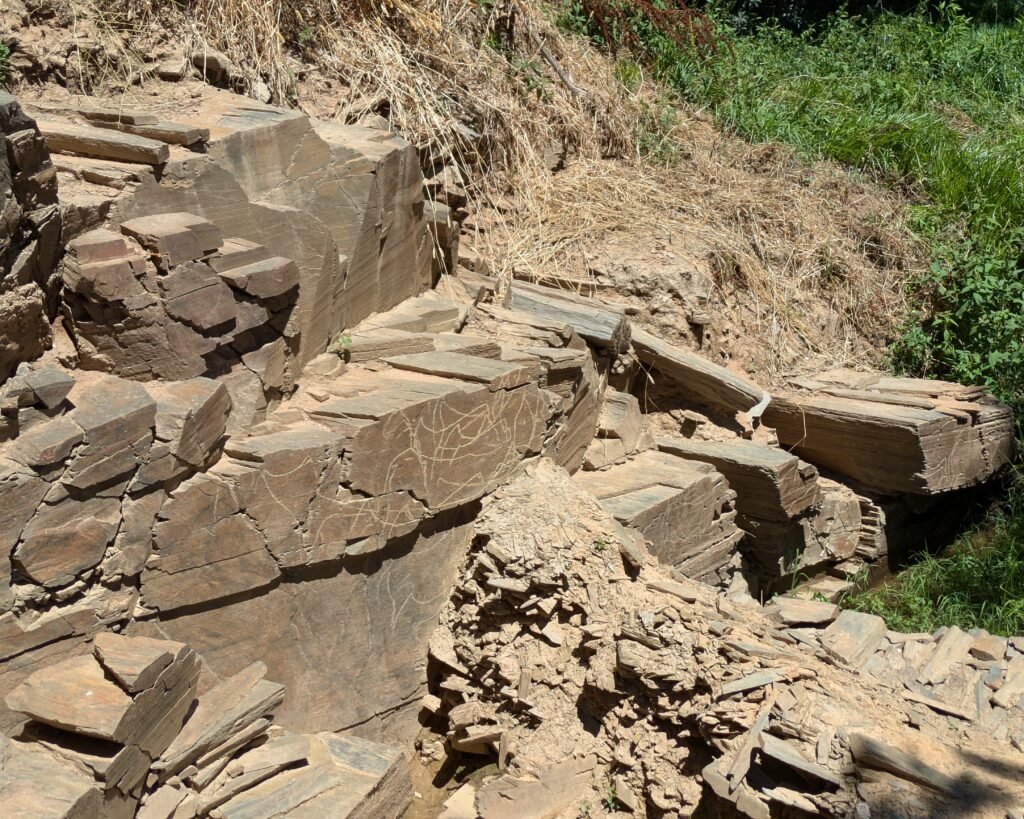
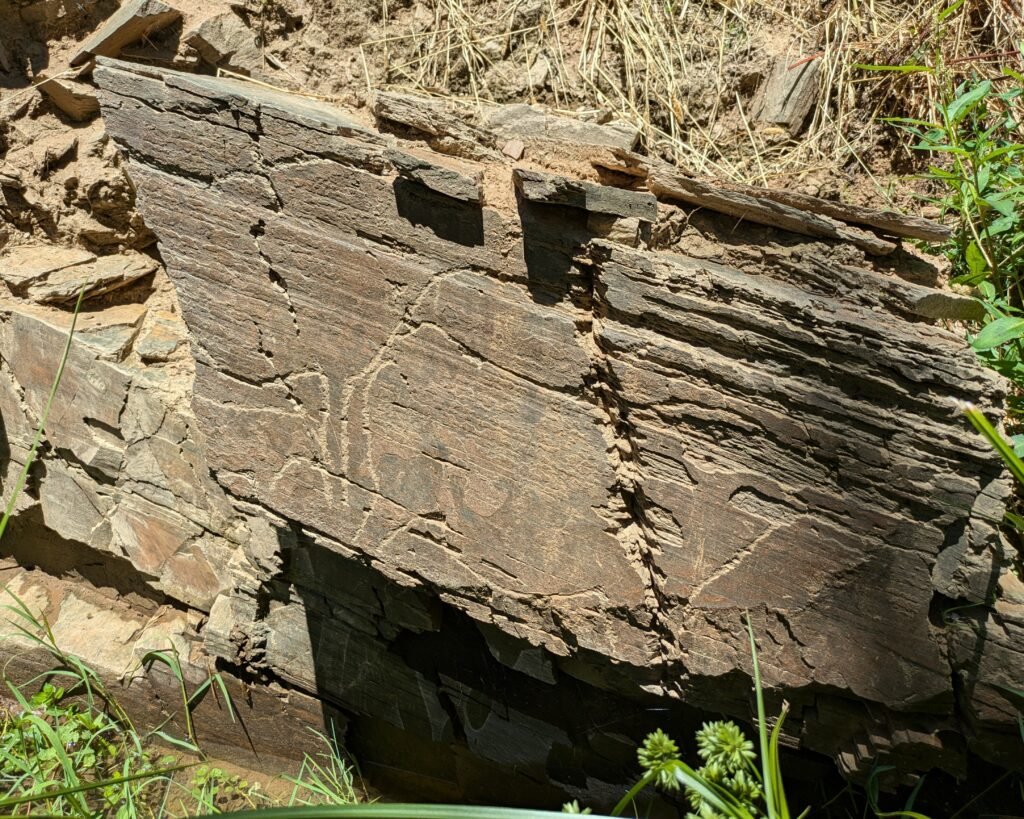
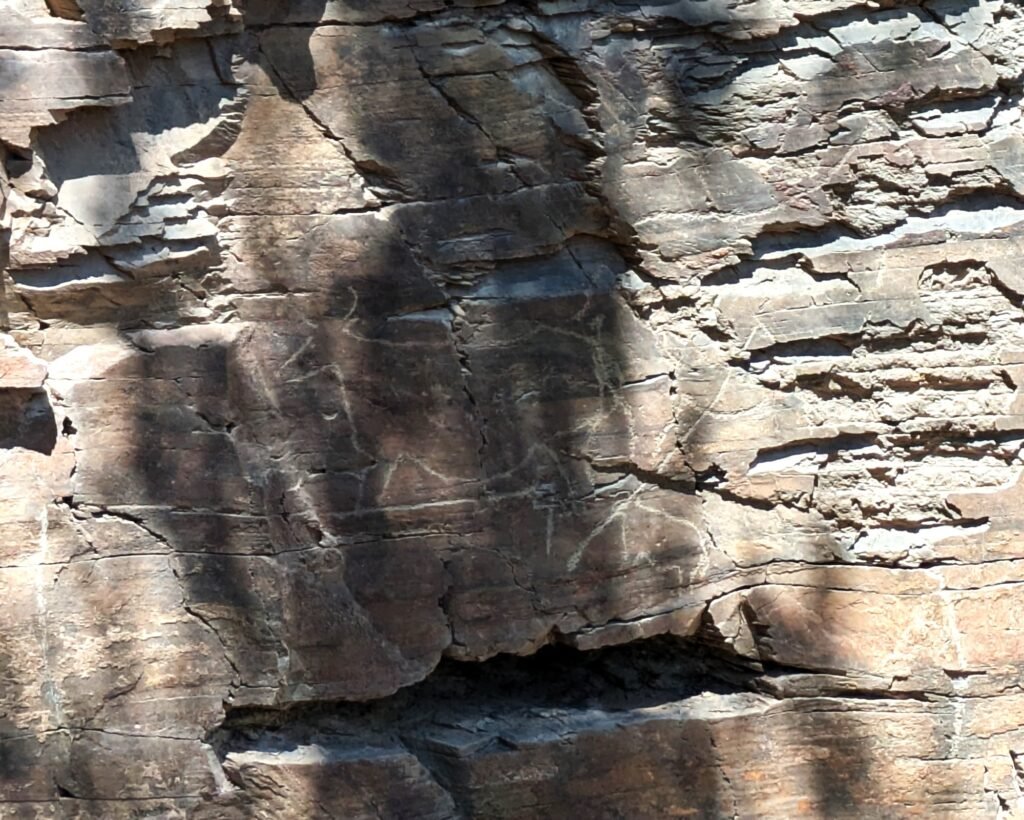
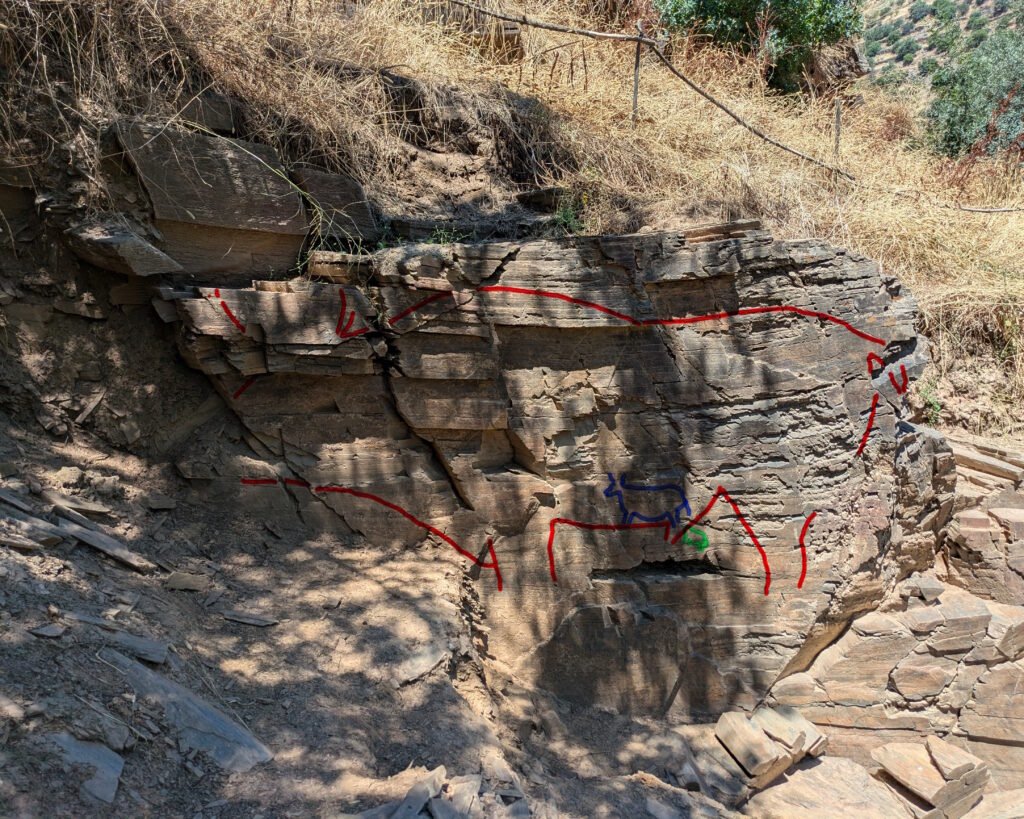
We see other rocks: carved horses, aurochs, deer, goats. Finally, he leads us to the rock closest to where we first disembarked. It’s an unfinished excavation, he explains: archaeologists are still studying the rock and the sediments beside it (to properly date it) and have to work slowly and carefully, so we get to see it as a work in progress.
This panel was only discovered in 2020. A stone with a single line was spotted. Excavations showed that was part of a carving of an auroch. It’s nearly life-size: 3.5 meters across, clearly defined despite breaks in the flat schist face. It is one of the largest figures in prehistoric art, and the largest in Iberia. João Pedro shows us the bull: its horns, back, belly, legs, and its sex where another, smaller auroch, round belly giving her gender away, stands near to a tiny auroch calf. Life and reproduction carved in stone.
The stones of the Fariseu site are an experience in art, archaeology, history, and more. The lines that are pecked and carved into the stone faces represent more than animals.
Location
The Côa Valley Archaeological Park is in the northern part of Guarda district, in Central Portugal. It’s in the municipality of Vila Nova de Foz Côa. The Côa River is a tributary of the Douro River, which runs east-west from Spain to Porto in Northern Portugal. The Côa River is in the western part of Portugal, near the Spanish border.
The Fariseu site is on the left bank of the Côa River, a few kilometers upriver from the original (incomplete) dam. It’s on a bend in the river, between the villages of Muxagata and Castelo Melhor.
Access
You must visit the site with an official guide: either from the museum or a licensed private guide.
There is a dirt road that leads towards the site, but the Côa Park uses solar-powered boats with electric motors for a river approach. (In my opinion, this is an optimal way of visiting the site!) They take you from the Canada do Inferno docks, just above the original dam, to and from the Fariseu site. The docks are accessed by a dirt road branching off from the main road running from Vila Nova de Foz Côa to Castelo Melhor & Almendra. There is a parking spot above the docks, which requires a downhill walk of about 200m.
Note: The valley is extremely hot in the summer. If you go between May and September, you should prepare for high temperatures. Hats, sunblock, and lots of water are essential. The Fariseu site can be relatively cooler, as it lies right beside the river and there are shady trees. However, you will still need to walk and stand in the sun.
Signage
There are signs on the main road running from Vila Nova de Foz Côa to Castelo Melhor & Almendra, directing you to the Canada do Inferno docks and the rock carvings. (When you reach the car park, with a building that has a toilet, there are no signs indicating where to go. If nobody is there to direct you, follow the dirt/gravel road down to the left. That winds up at the actual docks.)

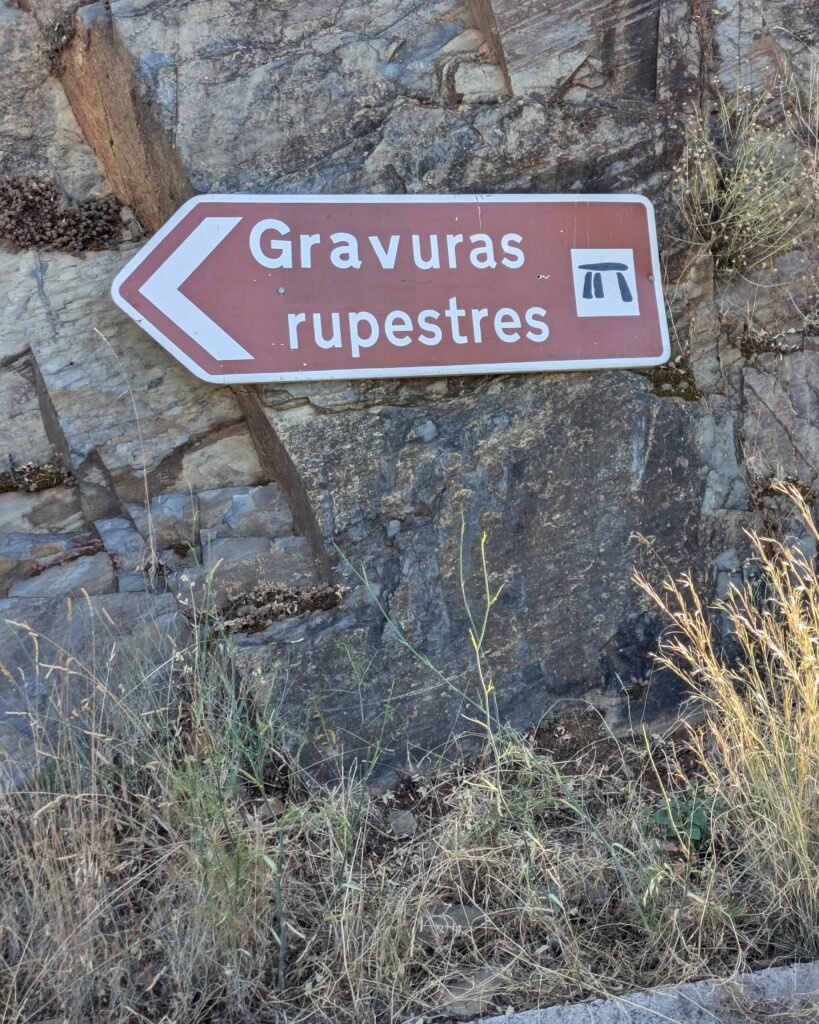
Links
- A video (language neutral, with Portuguese captions) from the Côa Museum showing off the site and a visit to it
- Visit description (in English) from the Côa Museum
- Description (in Portuguese) from Archaeologist’s Portal of Directorate-General of Cultural Heritage
- Designation (in Portuguese) as a national monument by the Directorate-General of Cultural Heritage
- An article (in English) about the latest discovery from Rewilding Portugal
Nearby
There are several visitable rock art sites in the Côa Valley Archaeological Park. The Côa Museum in Vila Nova de Foz Côa is well worth a visit, as it has excellent exhibits giving more detail about the art and Paleolithic life. It also has a reproduction of the submerged Fariseu rock that proved the art in the valley was actually from the Paleolithic period. Outside the park, there is the Chalcolithic/Bronze Age site of Castelo Velho de Freixo de Numão about 12km away. Slightly further is the chalcolithic Pala da Moura anta, about 28km away.
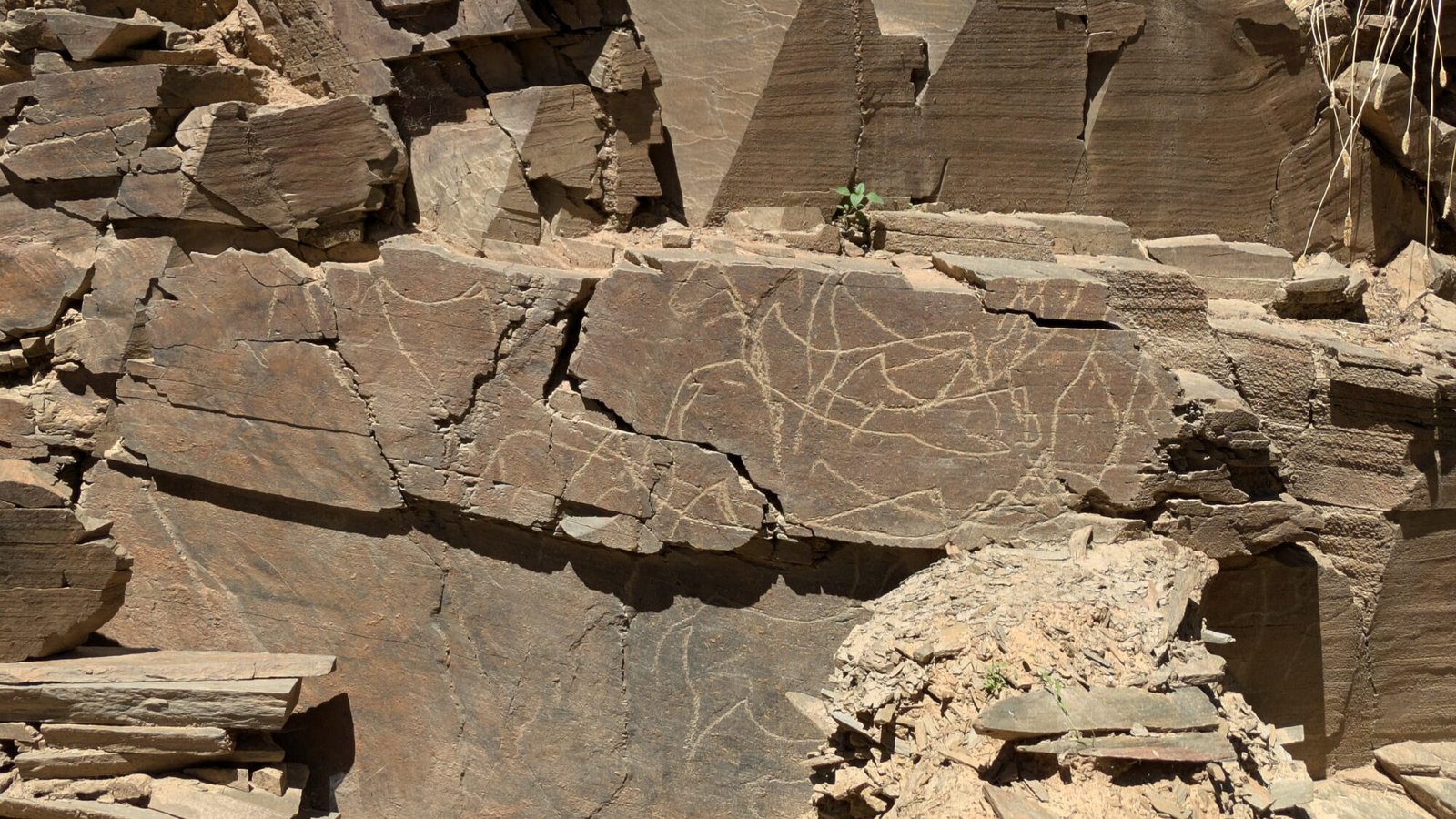
Pingback:Côa Museum - Prehistoric Portugal
Pingback:Prehistoric Rock Art Sites in the Côa Valley - Prehistoric Portugal